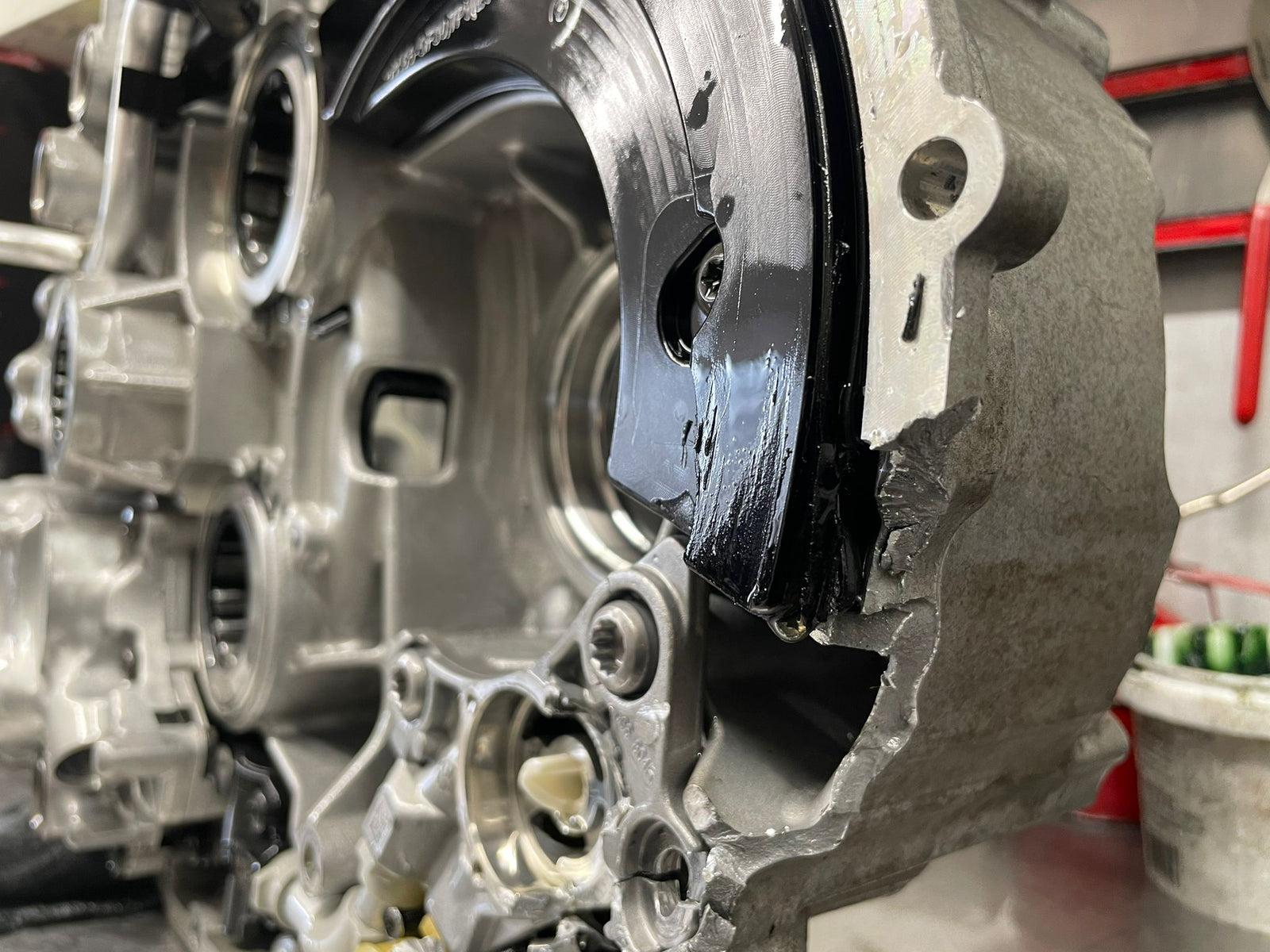Introduction
Owners of Audi, Seat, Skoda, and Volkswagen vehicles equipped with DSG gearboxes from 2016 onward may be facing a catastrophic issue. This problem, known to the manufacturer, has affected many vehicles but has gone unnoticed in a significant number of cases.
Here at Eco Torque, we have dealt with many common gearbox issues over the years, however, this one, has by far the most potential to cause irreparable damage and astronomical cost consequences if not caught and dealt with quickly.
For clarity the transmission in question is the 0GC DSG 7 Speed wet clutch gearbox. This is also known as the DQ381 and comes in both front wheel drive and four-wheel drive versions.
From the A1 to T-Roc this DSG gearbox is fitted in nearly every model in the VAG line up, meaning this article is likely to be relevant to you.
However, before we get into the gearbox fault and its alarming consequences, we will give you a brief run down on the gearbox and how we got to this point.
Terminology
For those of you unfamiliar with some of the terminology associated with the VAG range, which includes Audi, Seat, Skoda and VW, take a look at the reference guide here: VAG Terminology Guide - Audi, Seat, Skoda, VW Reference Guide
DQ250 / DQ500 to DQ381
In 2004, the dual clutch transmission was released in the VW Golf with the 02E DQ250 model. This was marked the first generation of wet dual clutch transmissions within in the VAG group. However, like many modern, complex gearboxes, it faced some issues, primarily with its advanced mechatronic unit.
This is the same story with the DQ250's larger brother, the DQ500. Fitted to higher powered vehicles, the unit experienced its own set of issues with pressure sensor failure and differential faults.
As with all things automotive, over time revisions and "improvements" were made, which lead us to the DQ381 we see fitted in the current models.
The DQ381 serves as a middle-ground gearbox, bridging the gap between the lower-power rated DQ250 and the heavier, but bulkier DQ500 unit.
The DQ381 brought together various design aspects of both gearboxes and revisions to improve reliability. One of these revisions involved the design of the gearbox’s oil pump system. Since components such as the clutch, pistons, selectors and so on, require pressurised oil to function, the gearbox uses a hydraulic pump to generate the necessary pressure.
Oil Pump Designs & Differences Between Models
DQ250 Oil Pump
The 02E oil pump is mounted at the rear of the box with a rod running through the transmission. This is driven by a gear that runs directly off the clutch pack housing. This type of design means we can replace the oil pump instead without having to remove and strip down the entire gearbox.

DQ500 Oil Pump
The DQ500 being a larger box has the capacity to house the oil pump inside the unit which runs directly off the clutch as opposed to featuring the long connecting shaft you can see the DQ250 has in the image above.
DQ381 Oil Pump
The DQ381 uses the same direct drive oil pump as the DQ500 unit, however a second pump is also utilised. The main pump which has now moved to a variable vane design is assisted by a smaller secondary traditional gear pump design.
Why does the 0GC gearbox have a secondary pump?
To reduce emissions, an electrically driven secondary pump is used to assist in the cooling and build-up of oil pressure in the unit at normal driving conditions.
It also generates oil pressure in Start-Stop mode, when the main pump is no longer being driven by the clutch system.
This means the system has maintained oil pressure for when the engine is restarted and reduces the need for large accumulators to store hydraulic pressure for such situations.
DQ381 Pump failure
Symptoms & Fault Codes
The first signs a driver will notice, is a warning light on the dashboard showing "Gearbox Malfunction”. The other symptom is the gearbox locking into either odd or even gears, which is a common fail-safe model for all DSG transmissions.
At this stage, it’s essential to take the car to a specialist as soon as possible. It’s advisable to find a transmission expert familiar with this issue, as the repair is relatively straightforward if addressed promptly. A knowledgeable repairer should provide a fixed price or at least a price range based on various scenarios.
If you have a diagnostic tool like VCDS or if the repair shop has scanned the vehicle, you may find one or more fault codes stored in the transmission control module (TCM).
Below, we’ve compiled a list of these fault codes, which can provide valuable insights for technicians and vehicle owners alike.
- P0C2900 - Auxiliary Transmission Fluid Pump Driver Circuit Performance.
- P175E00 - Clutch 1 Closes Unintentionally
- P176F00 - Clutch 2 Closes Unintentionally
- P175D00 - Clutch 1 Opens Unintentionally
- P176D00 - Clutch 2 Opens Unintentionally
- P189900 - Clutch 2 Function Restriction
- P060700 - Control Module Implausible
- P081000 - Control Module Implausible
Should any of the above appear, the gearbox will need to be stripped down to replace the pump and assess any further damage.
Best Case Scenario?
The pump failure is due to the securing bolts becoming loose and if detected early, the technician can simply replace the pump and internal filter. Since the filter is not serviceable without a complete transmission disassembly, this situation presents a slight advantage: it enables the thorough removal of any contaminants trapped inside.
Worst Case Scenario?
In the worst-case scenario, if the high-pressure pump becomes unsecured from the transmission, it can lead to the unit dissembling, resulting in irreparable damage to the gearbox casing. This situation necessitates a significant repair effort, as replacement casings are currently unavailable from the manufacturer, meaning a donor gearbox will be required.

Need Workshop Repairs?
Contact our workshop today on 01462 835335 or email us on info@eco-torque.co.uk, if you need help with your gearbox.
Need DSG 0GC Gearbox Parts?
Find our DSG 0GC product range here.
Get In Touch
Have you experienced any problems with your car? We’d love to hear from you! Share your feedback by leaving a comment below. We look forward to learning about your thoughts and experiences.
For specific enquiries, please reach out to us directly using the contact details provided below.
For more information
contact Eco Torque today
Tel: 01462 835335
Email: info@eco-torque.co.uk
Eco Torque Ltd, Unit 1A Portland Industrial Estate, Hitchin Road, Arlesey, United Kingdom, SG15 6SG


2 comments
I have a 1.5 petrol arteon with the 7 speed gearbox .I haven’t had any codes or dash board errors but have noticed the gearbox not being as smooth as you would expect,IEsnatching gears in stop start and also holding gears longer than normal ,had the TCM scanned with an error of sporadic failure it was suggested that the connector on the gearbox could be the issue .The car is now booked in to investigate this issue ,I have owned the car for 2 months and is in warranty but drives fine in semi and manuel modes.
I have got the code P0C2900 on my 2018 Seat Ateca, this has had a dual mass flywheel and clutch 18months ago at a seat dealer fitted under warranty